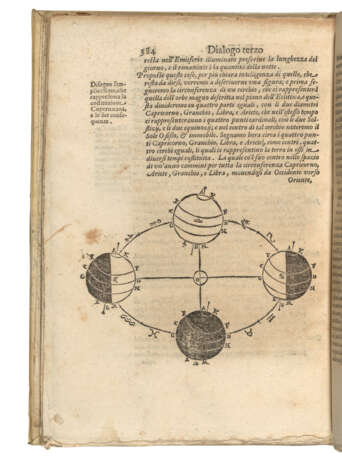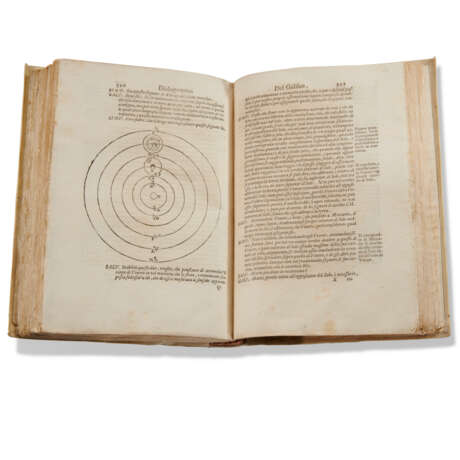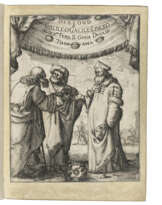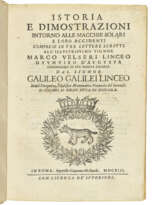ID 794497
Lot 159 | GALILEI, Galileo (1564-1642)
Estimate value
£ 60 000 – 80 000
Dialogo... sopre i due massimi sistemi del mondo Tolemaico, e Copernicano. Florence: Gian Battista Landini, 1632.
First edition of Galilei's famous defence of Copernican heliocentrism; the direct cause of his trial and imprisonment. After years of being forbidden to teach the Copernican theory, Galileo
was granted permission to write on the subject by the new Pope, Urban VIII (Maffeo Barberini, 1568-1644), his friend and patron for more than a decade, on the condition that Aristotelian and Copernican theories were put forward equally and impartially. To this end Galileo wrote his work as a dialogue among Salviati, an advocate for Copernicus, Simplicio, an upholder of the Ptolemaic and Aristotelian orthodoxy, and Sagredo, an educated layman who acts as adjudicator. Ostensibly impartial, the work ‘is a masterly polemic for the new science. It displays all the great discoveries in the heavens which the ancients had ignored; it inveighs against the sterility, wilfulness, and ignorance of those who defend their systems; it revels in the simplicity of Copernican thought and, above all, it teaches that the movement of the earth makes sense in philosophy, that is, in physics... The Dialogo, more than any other work, made the heliocentric system a commonplace’ (PMM). Galileo lost the support of Urban VIII by ascribing one of his views to the simple-minded Aristotelian Simplicius and was called to Rome for trial by the Inquisition. His sentence of life imprisonment was immediately commuted to permanent house arrest and the Dialogo was placed on the Index, where it remained until 1832. A large copy, with numerous deckle edges and the first quire unopened. Carli and Favaro, p.28; Cinti 89; Dibner Heralds 8; Grolier/Horblit 18c; Norman 858; PMM 128; Wellcome 2647a.
Quarto (239 x 166mm). Etched frontispiece by Stefano della Bella, printer's woodcut device on title-page, 31 woodcut illustrations and diagrams in text, woodcut initials, type ornament head- and tail-pieces and factotum initials, errata leaf Ff6, with the printed correction slip pasted in margin of F6v (p. 92) as usual (some browning, occasional light staining). 18-19th-century vellum, flat spine with gilt bands, lightly lettered in blind.
Special notice
No VAT on hammer price or buyer's premium.
| Artist: | Galileo Galilei (1564 - 1642) |
|---|---|
| Place of origin: | Italy, Europe |
| Auction house category: | Printed books |
| Artist: | Galileo Galilei (1564 - 1642) |
|---|---|
| Place of origin: | Italy, Europe |
| Auction house category: | Printed books |
| Address of auction |
CHRISTIE'S 8 King Street, St. James's SW1Y 6QT London United Kingdom | |
|---|---|---|
| Preview |
| |
| Phone | +44 (0)20 7839 9060 | |
| Buyer Premium | see on Website | |
| Conditions of purchase | Conditions of purchase |









![[GALILEO GALILEI (1564-1642) and Girolamo SPINELLI (c.1580-1647)]](/assets/image/picture_4734998/81ecb/b78ba02793ea9f7c89bc2421c803edfc1752012000jpg__fix_162_205.jpeg)



